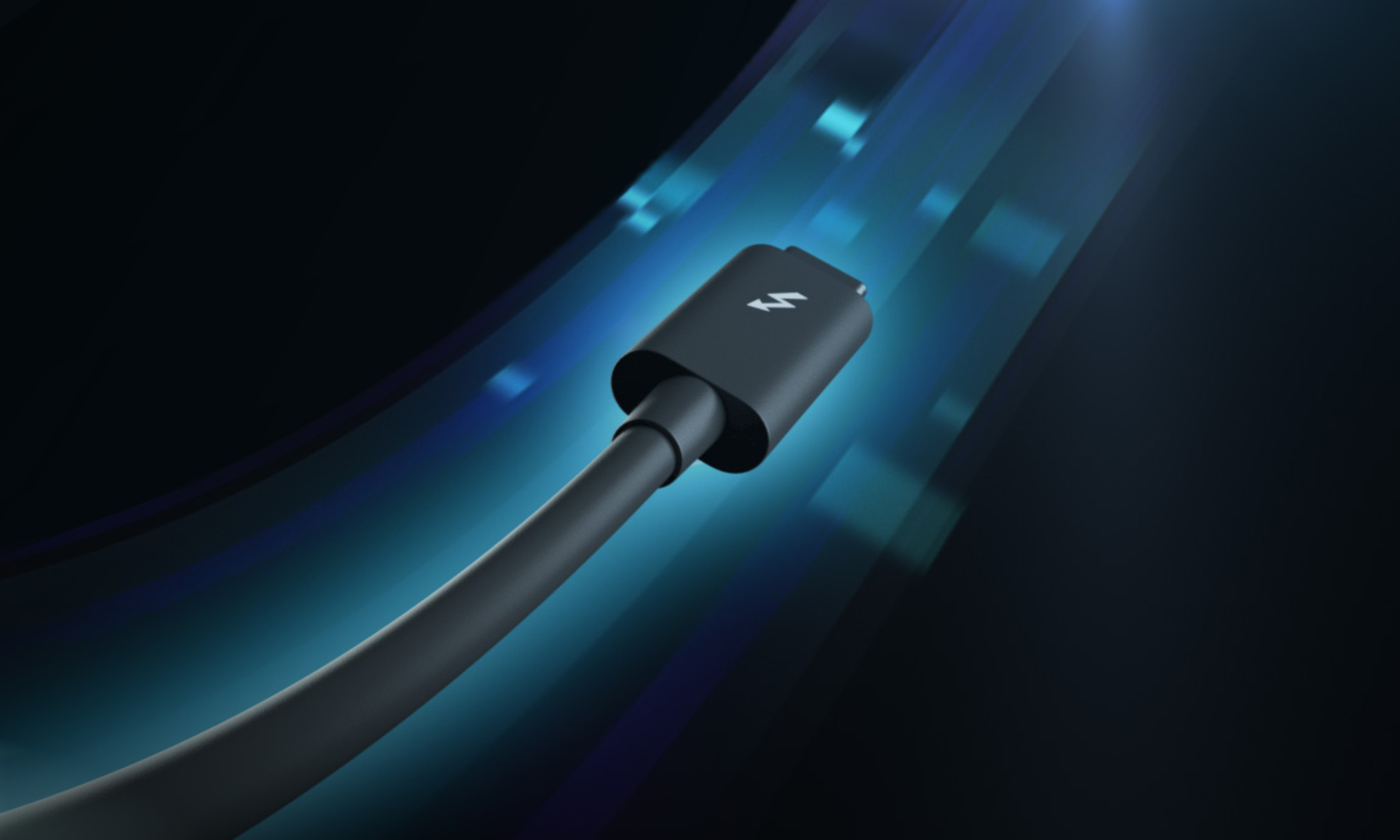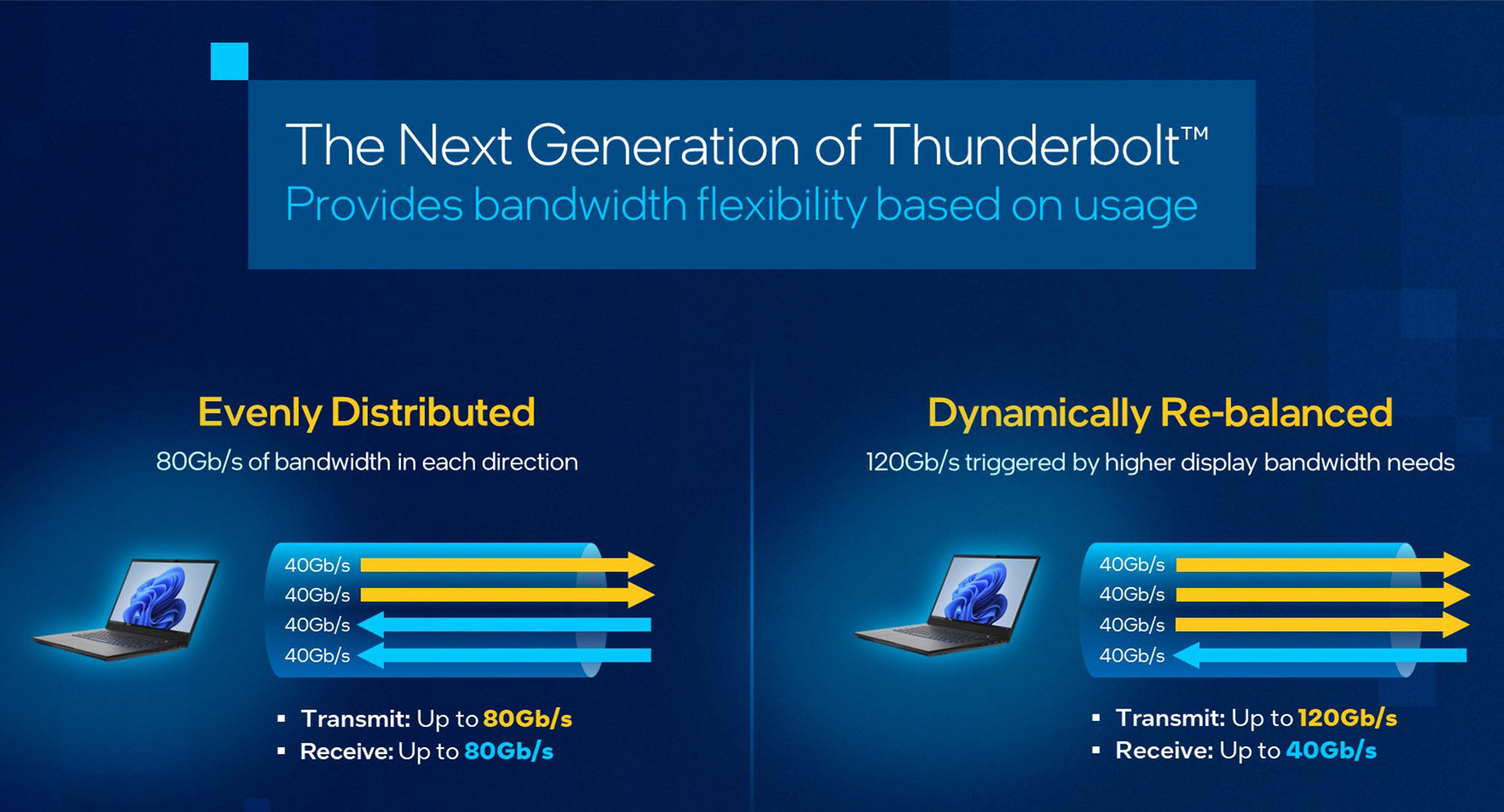News
Intel Unveils Next-Generation Thunderbolt Prototype
Intel has demonstrated an early iteration of its next-generation Thunderbolt technology, based on new USB4 v2 and DisplayPort 2.1 specs.

Intel has just released details of an early prototype of the next generation of its Thunderbolt technology. The next implementation of the port will deliver 80 Gbps of throughput, along with 120 Gbps of bandwidth, when hooked up to a display. These figures represent a massive leap in performance over the (already fast) current generation, and will be welcomed by both content creators and gamers alike.
“Thunderbolt is now the mainstream port on mobile PCs and integrated into three generations of Intel mobile CPUs. We’re very excited to lead the industry forward with the next generation of Thunderbolt built on the USB4 v2 specification,” says Jason Ziller, Client Connectivity Division, Intel.

In addition to supporting the latest USB4 standard, the next generation of Thunderbolt will feature a variety of improvements, including:
- Twice the total bandwidth of Thunderbolt 4, with triple the bandwidth for video-intensive applications.
- Support for DisplayPort 2.1.
- Twice the PCI Express data throughput for faster transfers and external GPUs.
- Ability to use existing passive cables up to 1m.
- Compatibility with previous versions of Thunderbolt, USB, and DisplayPort.
- Supported by Intel certification programs.
Also Read: Intel And Broadcom Show Off Super-Fast Wi-Fi 7 Technology
So when will gamers and content creators benefit from this new generation of Thunderbolt? Details are currently sparse, and Intel is well known for its stringent testing and certification programs, so it will be a fair while before we see major manufacturers adding updated ports to docks, laptops, and other hardware.
We’ll be sure to keep enthusiasts updated as the technology develops, but we doubt there will be further news until well into 2023.
News
Mamo Completes $3.4M Funding Round To Enhance Fintech Services
The startup will use the influx of cash to expand into Saudi Arabia and across the wider GCC while improving its product offering.

UAE-based fintech Mamo has announced the completion of a $3.4 million funding round that will help the startup extend its market presence and improve its product offering. Investors included 4DX Ventures, the Dubai Future District Fund and Cyfr Capital.
Mamo’s platform offers “payment collection, corporate cards and expense management” to help small and medium-sized businesses consolidate and streamline their operations. With the latest influx of capital, Mamo will further develop its comprehensive suite of services and begin testing its product lines in Saudi Arabia, further extending its footprint across the GCC.
Imad Gharazeddine, co-founder and CEO of Mamo, stated: “We’ve been in the market for a while now and are incredibly proud of what our team has achieved. The holistic and expansive nature of our product offering has helped us continue to grow sustainably. This additional funding will allow us to reach our medium-term goals even faster. The support from new and existing investors is a testament to our strong expertise and the ability to deliver on our customer promise”.
Daniel Marlo, General Partner of lead investor 4DX Ventures, added: “We have immense trust in Imad’s vision, leadership and Mamo’s innovative approach to provide a user-friendly and comprehensive financial solution for SMEs that makes financial management more accessible and efficient. We are proud to partner with them and support their mission”.
Also Read: A Guide To Digital Payment Methods In The Middle East
Amer Fatayer, Managing Director of Dubai Future District Fund’s investment team, also commented: “Mamo’s localized product lines serve as an infrastructure for SME payments and spend management in UAE, a segment that is underserved by the country’s current banking infrastructure. The team has taken a product-first approach to consolidating SMEs’ financial journeys and building a fintech solution deeply embedded in a business’s core operations”.
To date, Mamo has raised around $13 million in investment funding and now boasts a team of 30 people. The company’s intuitive financial services platform has allowed over 1,000 businesses to consolidate their financial operations and significantly reduce payment fees.
-

 News4 weeks ago
News4 weeks agoAmazon Prime Day 2024: Get Ready For 6 Days Of Amazing Deals
-

 News4 weeks ago
News4 weeks agoSamsung Unpacked 2024: What To Expect From The July 10 Event
-

 News4 weeks ago
News4 weeks agoCoursera Report Shows Surge In UAE Interest In AI Upskilling
-

 News4 weeks ago
News4 weeks agoMeet Dubai’s Groundbreaking Smart Robot Delivery Assistant
















